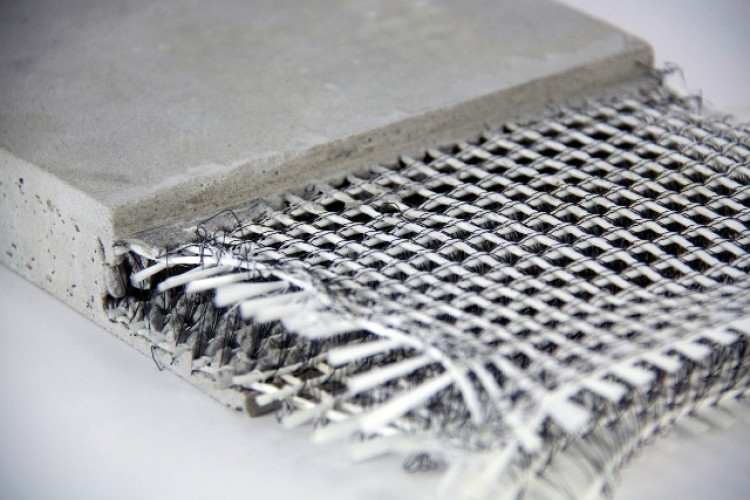Advanced Composites for Resilient and Lightweight Building And Construction
Advanced Composites for Resilient and Lightweight Building And Construction
Blog Article
Unlocking the Ecological Advantages of Recycled Compounds in Building And Construction and Style
In the realm of building and construction and layout, the use of recycled composites holds significant assurance for boosting sustainability practices and minimizing ecological impact. The change towards a more sustainable future in these markets hinges on opening the full possibility of recycled composites.

Ecological Influence Decrease
The reduction of ecological influence via the usage of recycled composites in building and construction and style plays an essential function in lasting techniques. By including recycled composites right into structure materials, the building industry can substantially lower its carbon impact and add to an extra environmentally friendly future. These lasting products, made from repurposed plastics, timber fibers, or various other recycled components, offer a feasible alternative to conventional building materials without jeopardizing on top quality or toughness.
Recycled composites aid draw away waste from land fills and lower the need for removing raw materials, thus conserving natural sources. Additionally, the manufacturing procedure of these compounds usually consumes less energy and produces fewer greenhouse gases compared to producing virgin materials (composites). This shift towards utilizing recycled composites not only minimizes ecological injury but additionally advertises a round economic situation by motivating the reuse of products that would certainly or else be discarded
Waste Minimization
With a focus on decreasing waste in building and layout, the combination of recycled composites supplies a lasting remedy to lower environmental impact. Waste minimization is a vital facet of sustainable methods, and making use of recycled compounds provides a chance to achieve this objective efficiently. By using products that have currently offered their first objective, such as recycled plastics or reclaimed wood fibers, the building and construction and design industries can dramatically minimize the amount of waste created and sent to garbage dumps.
Recycled composites have the potential to draw away significant amounts of waste from conventional disposal approaches, adding to a more circular economy where resources are utilized successfully. Additionally, the production procedure of recycled compounds frequently consumes less power and creates less discharges contrasted to virgin products, even more decreasing the ecological impact of construction and design tasks.
Executing waste minimization strategies through the incorporation of recycled composites not only aids in preserving natural deposits but likewise promotes a much more sustainable method to building and creating for a greener future.
Power Conservation
Including recycled composites not only decreases waste in building and layout however additionally plays a crucial role in boosting power preservation practices within the sector. Using recycled composites in construction can dramatically add to energy conservation with various ways. To start with, the manufacturing of virgin products usually requires significant energy inputs, whereas using recycled compounds eats much less energy, therefore decreasing general power usage. Additionally, including recycled compounds can add to far better insulation residential properties in buildings, minimizing the demand for too much heating or cooling, and as a result lowering energy usage for environment control. The light-weight nature of many recycled compounds can lead to lighter structures, needing less power for transport and setup. By advertising making use of recycled composites in construction and layout, the industry can make substantial strides in the direction of attaining power effectiveness and minimizing its carbon footprint, inevitably adding to a much more lasting constructed atmosphere.
Carbon Impact Reduction
Enhancing sustainability techniques through the use of recycled composites in building and construction and layout considerably reduces the carbon impact of the market. By including recycled materials right into the production of composites, the need for virgin sources reduces, bring about reduced energy usage and greenhouse gas emissions linked with standard production procedures. This reduction in carbon impact is crucial in combating climate modification and promoting a more eco-friendly strategy to building and construction and layout.
Additionally, making use of recycled composites additionally assists in diverting waste from landfills, therefore reducing the environmental impact of disposal and promoting a round economic climate. The carbon footprint reduction attained with the adoption of recycled compounds straightens with the international press in the direction of lasting practices and the reduction of industrial emissions. It showcases a commitment to responsible source management and a change in the direction of greener choices in the building and layout markets. Eventually, by prioritizing the combination of recycled compounds, the market can make considerable strides in lowering its carbon footprint and adding to a much more sustainable useful link future.
Lasting Future
The integration of recycled compounds in building and construction and design not only addresses prompt ecological concerns yet likewise lays a strong structure for a sustainable future in the sector. By including recycled compounds into building materials and items, the building and layout markets can significantly reduce their reliance on virgin resources, resulting in an extra circular economy. This change towards sustainability is crucial for reducing the environmental influence of traditional construction techniques, which commonly cause high degrees of waste generation and resource depletion.

Verdict
Finally, recycled composites provide considerable ecological benefits in construction and layout by lowering ecological effect, reducing waste, preserving energy, lowering carbon footprint, and advertising a sustainable future. Welcoming making use of recycled compounds can add to a more environmentally-friendly technique to structure and design, ultimately resulting in an extra sustainable and greener future for all.
The decrease of ecological effect with the usage of recycled compounds in building and design plays an important function in lasting techniques.With a focus on reducing waste in building and construction and design, the assimilation of recycled compounds provides a sustainable service to minimize ecological effect. By advertising the usage of recycled composites in construction and design, the sector can make considerable strides in the direction of accomplishing energy effectiveness and lowering its carbon footprint, ultimately adding to a more lasting constructed environment.

Report this page